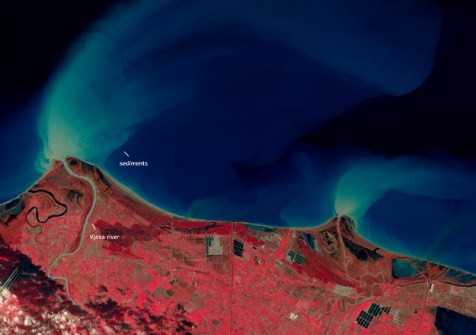
The European Copernicus Earth observation office has announced an “exceptional and temporary” extension of the availability of the data from the Sentinel-2A satellite mission for one year.
In September 2024, the third Copernicus Sentinel-2 satellite (Sentinel-2C) was successfully launched from the European Spaceport in French Guiana. Sentinel-2C was intended to gradually take over the tasks of Sentinel-2A as the latter approached the end of its nominal operational lifetime.
However, while Sentinel-2C has now successfully completed its commissioning phase and has been handed over to the European Commission by the European Space Agency (ESA), the decision to keep Sentinel-2A operational “reflects a commitment to maximising the capabilities of the flagship Earth Observation (EO) component of the EU Space Programme”.
This decision was driven by requests from the user community to continue having access to Sentinel-2A data, as the satellite remains in good health.
“Sentinel-2A will not retire yet,” said Christoph Kautz, Director for Satellite Navigation and Earth Observation at DG DEFIS.
“Copernicus is user-driven, and we listen to the users all the time. As of this March, Sentinel-2A will be operated to complement the Sentinel-2 mission data acquisition plan. This pilot activity will last one year. Afterward, together with ESA, we will assess the outcomes and decide on its potential prolongation.”

With Sentinel-2A, 2B, and 2C in orbit, users will benefit from improved data availability, bolstering applications in many areas including environmental monitoring, emergency response, and other key areas.
Through to March 2025, Sentinel-2A will be manoeuvred into a new orbital position, shifting 36 degrees away from Sentinel-2B.
This new configuration is designed to improve the availability of Sentinel-2 data, ensuring that Sentinel-2A continues systematic observations over Europe every 10 days, as with Sentinel-2B and Sentinel-2C, while providing an additional 20-day global cycle.













